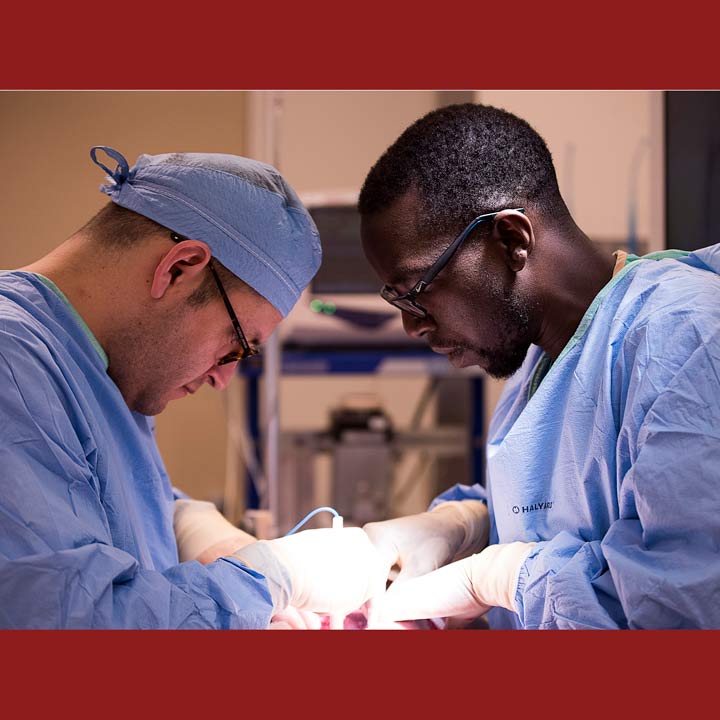 Body donors have long been used to teach anatomy, support skill development and advance research. “Like other academic medical centers, we use many simulation techniques at Ohio State, including box trainers, computer- and robot-aided task trainers and anatomy models, such as pigs or other animal substitutes,” surgeon Michael Meara, MD says. “These all provide good simulation when properly matched to the appropriate task, but real bodies from donors are obviously the ideal option, even with the traditional limitations to their soft-tissue feel and time restrictions on use.”
Body donors have long been used to teach anatomy, support skill development and advance research. “Like other academic medical centers, we use many simulation techniques at Ohio State, including box trainers, computer- and robot-aided task trainers and anatomy models, such as pigs or other animal substitutes,” surgeon Michael Meara, MD says. “These all provide good simulation when properly matched to the appropriate task, but real bodies from donors are obviously the ideal option, even with the traditional limitations to their soft-tissue feel and time restrictions on use.”
Building on the Imperial College of London soft-tissue preservation (ICL-SP) technique and his own research, Joy Balta, PhD, Ohio State’s director of the Anatomical Services and Body Donation Program, developed a new body preservation initiative for the university and medical center that has been used since 2019.
“Embalming body donors with a mixture of alcohol, phenol and glycerol, instead of formaldehyde, offers multiple benefits,” Dr. Balta explains. “The bodies retain a closer match to living bodies with better soft-tissue touch, the anti-microbial properties improve safety and we can reuse the same donor for different procedures for up to six months.”
“Ultimately, this single advancement allows more respectful use of a limited resource,” Dr. Meara says. “The same donor can be used in a gallbladder lab, for example, and then used for a different surgery simulation weeks or months later. This could be followed by clinical or education research, a forensic project, health and safety testing or even community outreach to provide anatomy education.
“That’s a powerful way to respect the donation that’s been made to us, and it’s a responsibility we don’t take lightly,” Dr. Balta adds.
It’s anticipated that the next advancements to body donor utilization will be the addition of procedure-based simulation of body functions, such as blood flow or breathing. “Until then, this new soft-tissue preservation technique has provided our team an incredible advantage in discovery,” Dr. Meara says.
For questions about the impact this advanced body preservation technique has had on the Ohio State surgery program or to explore surgical education opportunities and curriculum, contact michael.meara@osumc.edu.
Dr. Balta emphasizes the collaboration possibilities available to other health care centers that could benefit from this preservation process. If you would like more information about the technique or want to discuss a potential partnership with Ohio State’s Anatomy program, contact Dr. Balta at joy.balta@osumc.edu.
